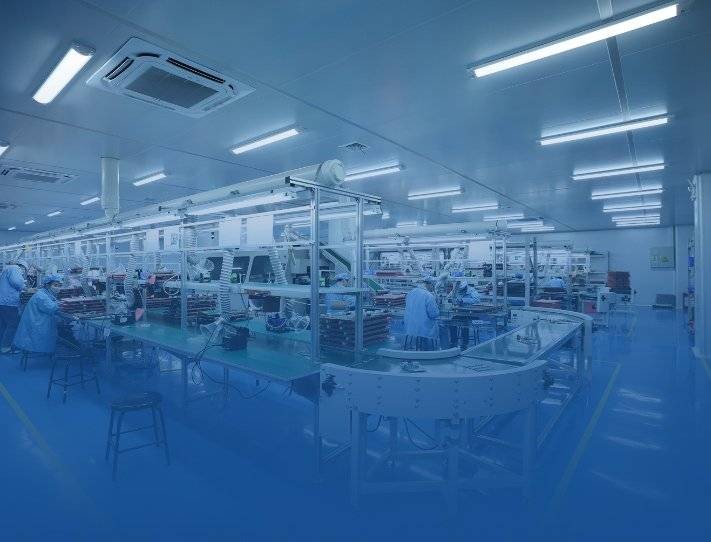PCBA finished product assembly: the perfect blend of precision and efficiency
In the broad field of electronics manufacturing, PCBA (printed circuit board assembly) finished product assembly is a key link connecting design, production and market. This process requires not only a high degree of technical precision, but also an emphasis on production efficiency and quality control to ensure that the final product can meet the stringent requirements of the market and the expectations of customers. This article will delve into the process, technical points, quality control, and future development trends of PCBA finished product assembly.
1. Overview of the assembly process of PCBA finished products
PCBA finished assembly is the process of soldering or mounting electronic components on a printed circuit board (PCB) precisely according to the design requirements, and forming a complete electronic product through subsequent assembly processes. This process can be broadly divided into the following steps:
Preparation stage: including PCB board inspection, cleaning, component procurement and inspection, etc. Ensure that all raw materials meet quality standards, laying a solid foundation for subsequent assembly work.
SMT (Surface Mount Technology): Miniaturized electronic components (such as resistors, capacitors, IC chips, etc.) are accurately mounted on the designated position of the PCB board by using automated equipment, and are soldered and fixed by reflow soldering and other methods. SMT technology greatly improves assembly efficiency and accuracy.
DIP (Dual In-line Package) plug-in technology: For components that cannot be installed by SMT technology (such as large connectors, transformers, etc.), they are inserted into the through-holes of the PCB board by manual or automated equipment, and soldering operations such as wave soldering are performed.
Assembly and testing: Assemble the soldered PCBA board with other non-PCB components (such as shells, displays, buttons, etc.) to form a complete electronic product. This is followed by functional, performance, and reliability testing to ensure that the product meets design requirements and quality standards.
Packaging and shipment: The products that pass the test are packaged, labeled with the necessary labels and instructions, and then shipped according to customer requirements.
2. Technical points and challenges
Technical points
Precision control: PCBA finished product assembly has extremely high precision requirements, whether it is the placement position of components or the welding quality, it needs to be strictly controlled within the allowable error range.
Automation and intelligence: With the progress of science and technology, automation and intelligent equipment are more and more widely used in the assembly of PCBA finished products. These devices not only improve production efficiency, but also reduce labor costs and error rates.
Anti-static and anti-pollution: Electronic components are very sensitive to static electricity and pollution, so strict anti-static and anti-pollution measures need to be taken during the assembly process to ensure that the components are not damaged.
challenge
Miniaturization and densification of components: With the continuous miniaturization and diversification of electronic products, the size of components is getting smaller and denser, which brings greater challenges to assembly work.
Quality control: PCBA finished product assembly involves multiple links and multiple factors, and negligence in any one link may lead to product quality problems. Therefore, how to ensure the quality control of the whole process is an urgent problem to be solved.
Cost control: In the pursuit of high quality and high efficiency, how to control the cost is also an important challenge for PCBA finished product assembly.
3. Quality control
The quality control of PCBA finished product assembly runs through the entire production process, including raw material inspection, production process monitoring, finished product testing and other links. In order to ensure product quality, enterprises need to establish a sound quality management system, strengthen staff training, improve the quality awareness of employees, and adopt advanced testing equipment and testing methods to strictly control and check every link.
Fourth, the future development trend
With the continuous development of the electronics manufacturing industry, the assembly of PCBA finished products will also usher in new development opportunities and challenges. In the future, PCBA finished product assembly will pay more attention to the development direction of automation, intelligence and greening. The application of automation and intelligent equipment will further improve production efficiency and product quality, and reduce labor costs; Green production will become an inevitable choice for the sustainable development of enterprises. In addition, with the continuous development of technologies such as the Internet of Things and artificial intelligence, the assembly of PCBA finished products will also usher in more innovations and application scenarios.
In short, PCBA finished product assembly is an indispensable and important part of the electronics manufacturing industry. By continuously optimizing the production process, improving the technical level and strengthening the quality control, enterprises can produce more high-quality, efficient and reliable electronic products to meet the needs of the market and the expectations of customers.
